While mowing the lawn might seem like a mundane spring and summer chore, you can actually put those grass clippings to good use in your garden!
Mowing is just a part of warm weather living for most folks. The grass needs to be mowed and the result of this process is grass clippings. Most people just leave the clippings where they fall. Or, they gather them up but then toss them in yard waste bags to head toward landfills.
It’s actually a tragic end for those clippings to end up in a landfill, Especially when they can be put to amazing use in your garden spaces instead! Grass clippings are actually the perfect free resource that can not only benefit your plants but also your soil as well.
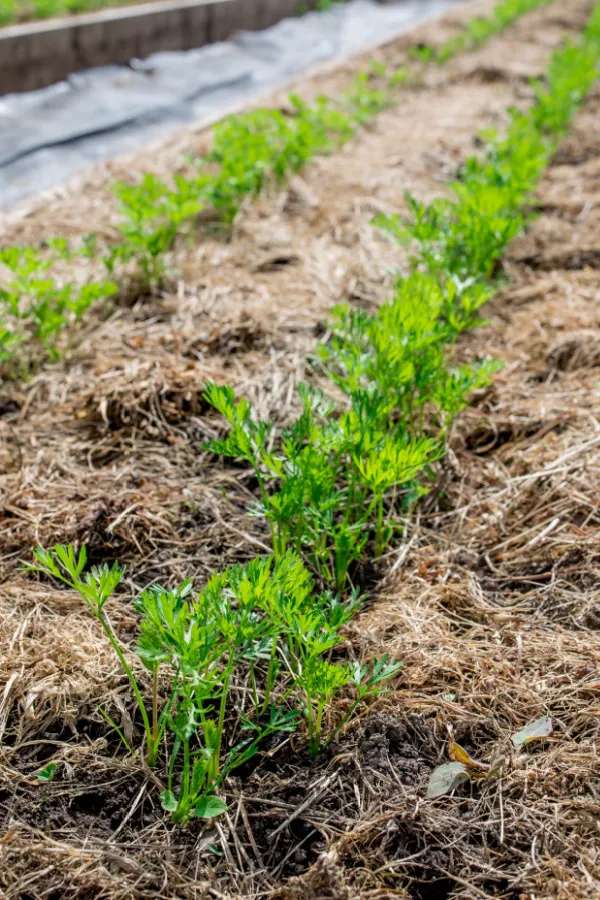
Benefits Of Using Grass Clippings In The Garden
Grass clippings are a great, free source of organic matter. Not only can the clippings help to improve the composition of dense soils, but they can also create soil that drains better with increased aeration.
When combined with your existing soil, the grass clippings also help to create an environment that is welcoming to beneficial insects and earthworms. They help to improve the microbes and organisms that are so beneficial to garden plants and flowers.
They are also a great source of nutrients for plants. Grass clippings are made up of 4% nitrogen, 2% potassium, and 1% phosphorus. In fact, using grass clippings as a natural fertilizer helps to reduce commercial fertilizers usage by up to 25%.
The last benefit of using grass clippings is that it reduces waste in our landfills. According to the Environmental Protection Agency (EPA), grass clippings and other yard waste actually make up around 12% of solid waste in landfills.
Ways To Use Grass Clippings In The Garden
Before using your grass clippings in your garden, there are a couple of things to remember. For starters, it is best to try to use clippings that are longer than an inch for your garden. Longer blades will help insulate and protect more. This means you might need to allow your lawn to grow a bit longer before cutting.
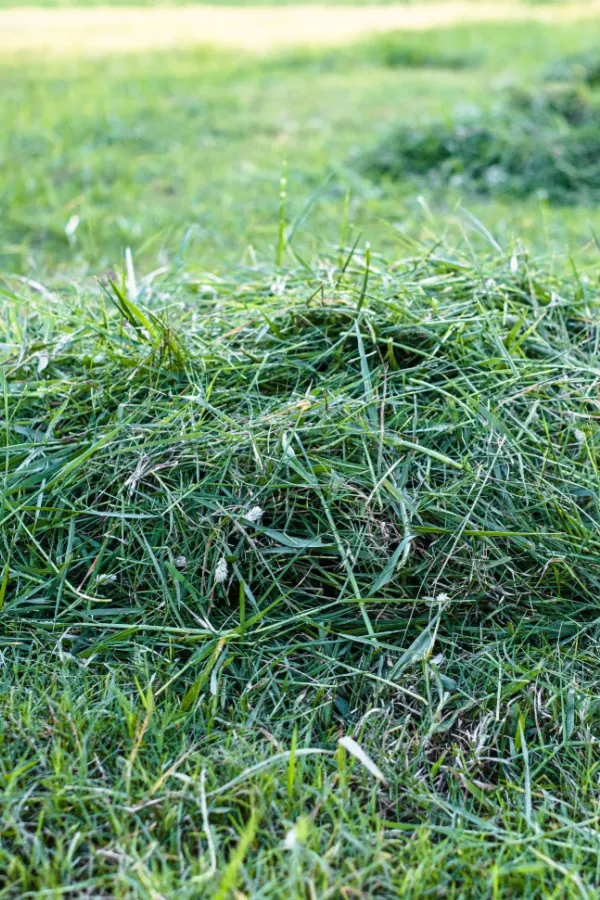
Always be sure that you are using clippings that are free of chemicals, sprays, or any other product that might contain pesticides or herbicides. Those products shouldn’t go anywhere near your garden plants. If you treat your yard with chemicals or sprays, do not use them in your garden.
Also, avoid using any grass that might be diseased or that contains a lot of weeds. You might run into the chance of collecting those weed seeds in your clippings and then spread those to your garden soil.
Use As Mulch – Using Grass Clippings In The Garden
One of the best and easiest ways to use grass clippings in your garden is by using them as an all-natural mulch. A great bonus is that grass clippings are already the perfect size for applying around plants without any additional work needed (i.e., no shredding required like you’d need to do for dried leaves).
Using mulch around your garden plants helps to retain moisture after watering or rains. It also will help to regulate the soil temperature as they fluctuate throughout the day.
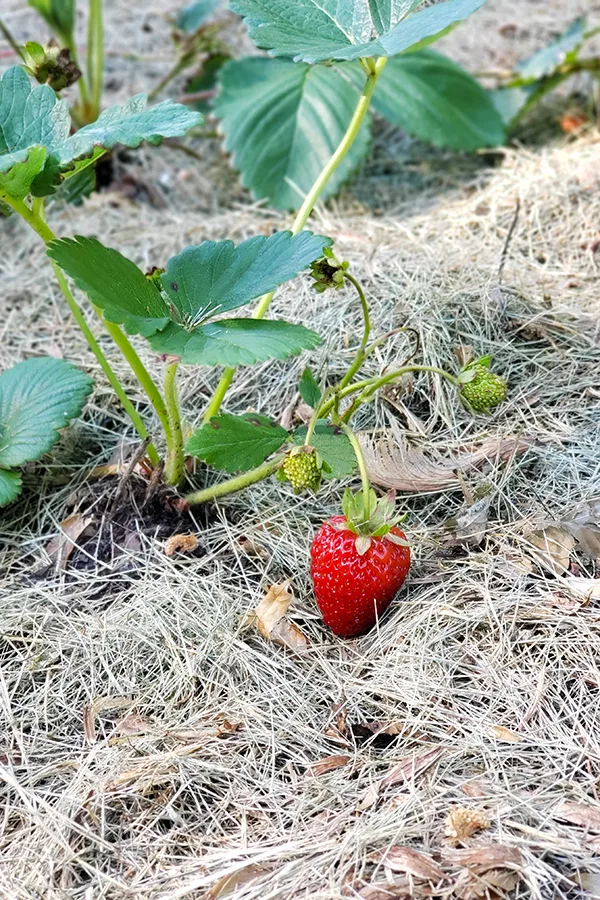
Another added advantage of using mulch around plants is that it helps to snuff out weeds. This is a huge plus for people who don’t want to spend hours outside weeding their gardens.
To use, simply apply a thick layer of around 4 to 6 inches of clippings around each plant and on the surrounding bare soil. Just be sure not to actually touch the clippings to the plants’ stems to avoid rotting issues.
As the growing season progresses, the grass clippings will start to break down and reduce in size. If that happens, simply add another thick layer of clippings right on top. There is no need to remove them at the end of the growing season either. The clippings will decompose and add wonderful organic matter to your soil for the next growing season.
Don’t Forget Container Plants
Container plants can often benefit from a layer of mulch as well. Grass clippings make excellent mulch for strawberries and other container plants. They will not only benefit the plants as stated above, but the clippings will also help to keep the fruit clean and dirt-free.
Add To Compost Piles – Using Grass Clippings In The Garden
Using compost and good gardening go hand-in-hand, so it makes sense for you to use any and all of the natural items you have around your property to help create your own compost. That includes grass clippings!
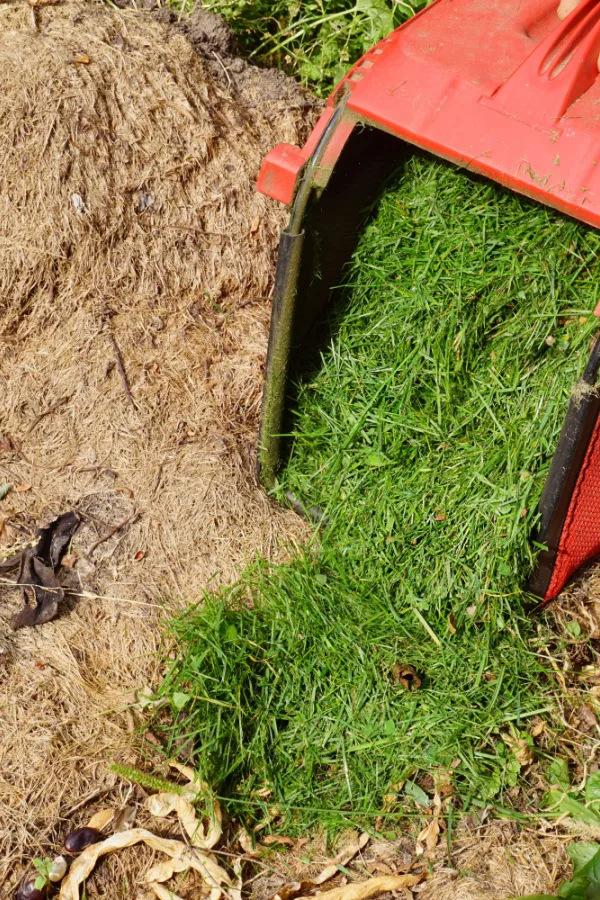
Grass clippings are a perfect addition to home compost piles. They are considered to be green materials because they are high in nitrogen. Green items help to really heat up compost piles and aid in the decomposition of materials.
Simply add the fresh grass clippings into your compost pile, mixing them in well. To create compost that heats up and decomposes quickly, make sure to add in a good amount of brown materials, too. Items like shredded dead leaves, straw, wood chips and cardboard are all considered to be brown materials.
Make Grass Clippings Tea – Liquid Fertilizer
Just like you can make compost and worm casting tea to power plants, you can also create a grass clipping’s tea to use in your garden and flowerbeds. Essentially, it is a low-dose liquid fertilizer that you can use whenever your plants need a good boost of nutrients.
To create grass clippings tea, fill a 5-gallon bucket about a third to half full of fresh clippings. Next, add enough water until your bucket is full. Cover the bucket and place it in a warm location such as inside a shed or garage space. Try to give it a stir every day or so.
After about two weeks, you can strain out the solids and add them to your compost pile. The leftover liquid fertilizer can be used the next time you need to water your plants. Use about a cup or two of the liquid per plant.
Filling New Raised Beds
If you are starting new raised beds this year, use grass clippings to help fill them. Add the grass clippings to your base layer of small sticks, shredded leaves, straw, shredded newspapers, etc. All of these items add organic matter to the raised beds as they start to break down over time.
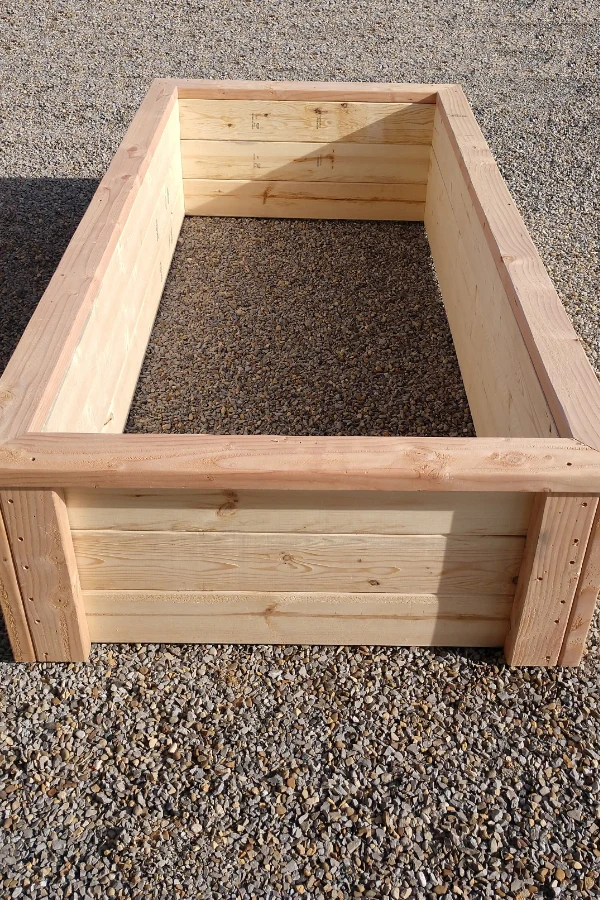
You will want to add as much as possible since this layer of organic matter will break down over time and the height will reduce. On top of this layer, you can add your soil and compost mixture. With all of the great benefits of using grass clippings in your garden space, it’d be a shame to let this free and easily accessible resource go to waste!
Follow Our Facebook Page For Even More Great Tips! Simple Garden Life Facebook Page
Simple Garden Life is a website dedicated to keeping gardening fun, simple and enjoyable! We publish two new articles each week along with a new garden podcast episode every two weeks. This article may contain affiliate links.
